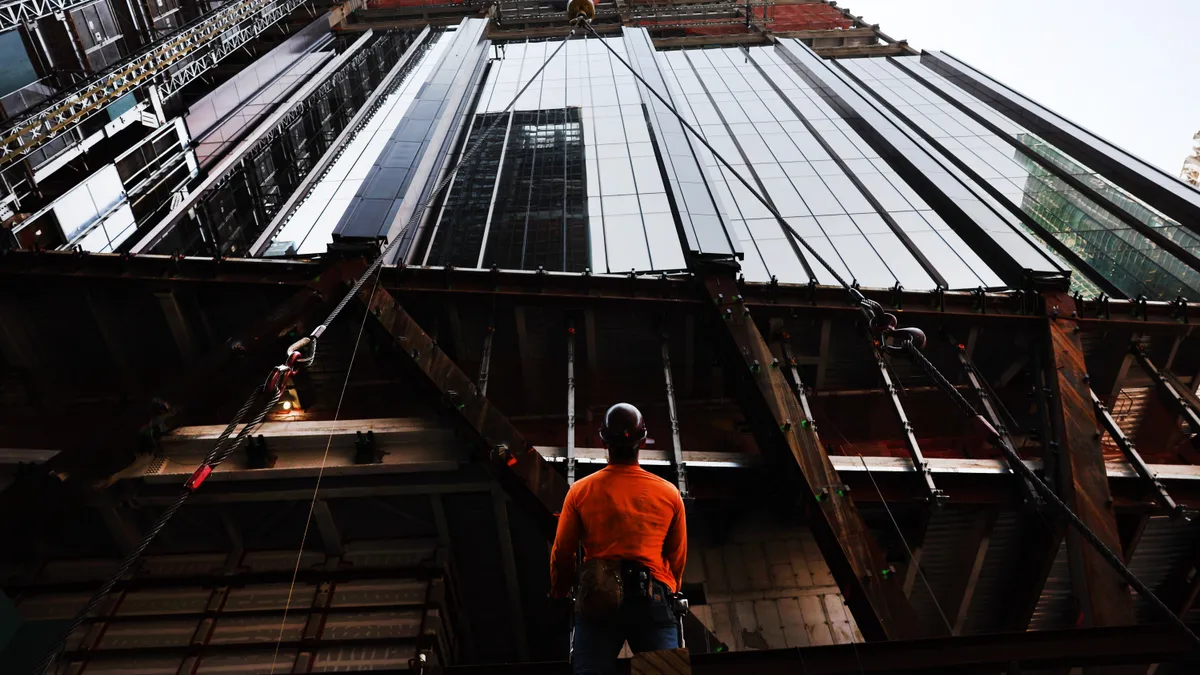Changes to a New York law aimed at speeding up the payment process for contractors could ultimately do the opposite.
That’s the view of one New York City real estate attorney.
“I think the amendment creates more issues for owners and contractors,” said Charles Pierce, member and head of the construction law department at Rosenberg & Estis, a New York City-based real estate law firm. “Most of the disputes I see involve whether or not the owner or contractor properly approved or disapproved an invoice within the 12 business days and whether monies were properly withheld.”
New York’s Prompt Payment Act, which sets the standards that govern private commercial construction contracts exceeding $150,000, was amended last year, with the changes effective Nov. 17.
The amendment limits the amount of retainage an owner can hold back from a contractor — which owners routinely do in order to assure quality project completion and contractual compliance — to 5% of the project’s value. The change also allows contractors to submit final invoices for the full price of a job at “substantial” completion instead of final completion.
But while the act intends to streamline the payment process for contractors, the language of the amendment ultimately misses the mark, said Pierce.
“While the amendment may have been well intentioned to reduce retainage and expedite the closeout and payment on a project, I think it falls short and may create more issues,” said Pierce.
That’s because under the recent changes, an owner could argue they are allowed to withhold 10% retainage until the project is 50% complete and then no retainage on remaining payments. That would enable owners to never exceed the overall maximum limit of 5%, while still withholding more relative to overall completion.
The reason this matters is because contractors are still limited to withholding a max of 5% from their subcontractors, which has the potential to create an “accounting nightmare,” said Pierce.
He added another issue is that while changes to the law permit a contractor to submit a final invoice upon reaching substantial completion of a project, actual payment of the invoice is not due until 30 days after approval of the invoice.
But that could create another payment gap, since those kinds of approvals usually don’t come until after a project is complete, and all the closeout paperwork is submitted. Lastly, many owners and developers may lack familiarity with the requirements of the act, potentially leading to inadvertent violations of the law and exposing themselves to liability, added Pierce.
Late payments persist
Late payments and transaction errors continue to plague the construction industry. The sector’s Days Sales Outstanding, a national measurement of how long a company waits to receive payment for its products or services, worsened to 94 days in 2023 from 90 days in 2022, according to a report from The Hackett Group, a Miami-based management consulting company.
That leads to workers missing paychecks, vendors not getting paid and projects getting delayed by months, according to a December 2023 analysis from Pymnts, a media company focused on payments, fintech and financial services.
From that perspective, contractors could view the changes to New York’s law as a step in the right direction, said Tim Hegarty, partner of Zetlin & De Chiara, a New York City-based law firm.
“I think [contractors] should take it as good news,” said Tim Hegarty, partner of New York City-based Zetlin & De Chiara. “Some may argue that it’s still possible to withhold more than 5% of the contract,” but that’s still better than the ubiquitous 10% that was usually withheld in the past, Hegarty said.
And, Hegarty said, contractors can receive final payment in New York today sooner than they did in the past. Nevertheless, it’s not great news for owner-developers, he said.
“Typically, for practical purposes, it’s very common to reduce retainage on construction projects as they progress. So, it’s not uncommon to have 10% retainage withheld until say 50% of the work is complete or 75% of the work is complete, and then no further retainage is withheld. Then more is released upon substantial completion and then the balance upon final payment. That’s the way it used to work commonly.”
The downside for contractors is that now, if retainage is capped at 5%, owner-developers may start pushing for more specificity when it comes to documenting how far along a project is, something that’s captured in a document known as a schedule of values. Owners could put a lot more scrutiny on those schedules in the wake of the changes, adding another hurdle for contractors.
“Another reaction by owner-developers might be to require more trade contractors to obtain payment and performance bonds, which would provide the owner-developer with some additional security that the contractor isn’t going to default and will complete performance of the contract,” said Hegarty. “Some of the smaller trades are not qualified to get bonds. That could actually be a potential negative for contractors.”





















